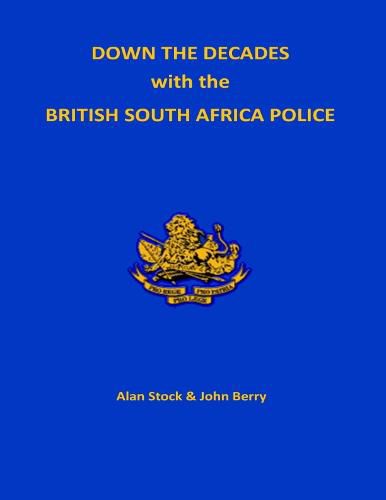Readings Newsletter
Become a Readings Member to make your shopping experience even easier.
Sign in or sign up for free!
You’re not far away from qualifying for FREE standard shipping within Australia
You’ve qualified for FREE standard shipping within Australia
The cart is loading…






This title is printed to order. This book may have been self-published. If so, we cannot guarantee the quality of the content. In the main most books will have gone through the editing process however some may not. We therefore suggest that you be aware of this before ordering this book. If in doubt check either the author or publisher’s details as we are unable to accept any returns unless they are faulty. Please contact us if you have any questions.
The British South Africa Police and its immediate forerunner, the British South Africa Company’s Police, was responsible for maintaining law and order in the vast territories between the Limpopo and Zambesi Rivers and the Bechuanaland Protectorate on the West and Portuguese East Africa on the East. These territories became Southern Rhodesia, named after Cecil Rhodes who was the driving force behind the B.S.A. Company. From commencement in 1889 until disbandment in 1980 the B.S.A.P. steadily evolved from a military organisation, the First Line of Defence of Rhodesia, to a modern Police Force. It still maintained the traditions of a Regiment in its discipline and after disbandment the many branches of the Old Comrades organisations world wide of the B.S.A.P. are titled Regimental Associations. This booklet comprises articles from each decade of the Force’s existence and illustrates the evolution. At the beginning the horse was the main means of transport and gradually through the 20th century mechanical transport took over and more sophisticated techniques were employed. At the end during the major counter-insurgency operations of the Rhodesian Bush war, aircraft and helicopters were used. Ironically, at the end, there was still a Mounted Unit operational which rendered valuable service. Hopefully, all the articles together give a snapshot of the history of the B.S.A.P.
$9.00 standard shipping within Australia
FREE standard shipping within Australia for orders over $100.00
Express & International shipping calculated at checkout
This title is printed to order. This book may have been self-published. If so, we cannot guarantee the quality of the content. In the main most books will have gone through the editing process however some may not. We therefore suggest that you be aware of this before ordering this book. If in doubt check either the author or publisher’s details as we are unable to accept any returns unless they are faulty. Please contact us if you have any questions.
The British South Africa Police and its immediate forerunner, the British South Africa Company’s Police, was responsible for maintaining law and order in the vast territories between the Limpopo and Zambesi Rivers and the Bechuanaland Protectorate on the West and Portuguese East Africa on the East. These territories became Southern Rhodesia, named after Cecil Rhodes who was the driving force behind the B.S.A. Company. From commencement in 1889 until disbandment in 1980 the B.S.A.P. steadily evolved from a military organisation, the First Line of Defence of Rhodesia, to a modern Police Force. It still maintained the traditions of a Regiment in its discipline and after disbandment the many branches of the Old Comrades organisations world wide of the B.S.A.P. are titled Regimental Associations. This booklet comprises articles from each decade of the Force’s existence and illustrates the evolution. At the beginning the horse was the main means of transport and gradually through the 20th century mechanical transport took over and more sophisticated techniques were employed. At the end during the major counter-insurgency operations of the Rhodesian Bush war, aircraft and helicopters were used. Ironically, at the end, there was still a Mounted Unit operational which rendered valuable service. Hopefully, all the articles together give a snapshot of the history of the B.S.A.P.